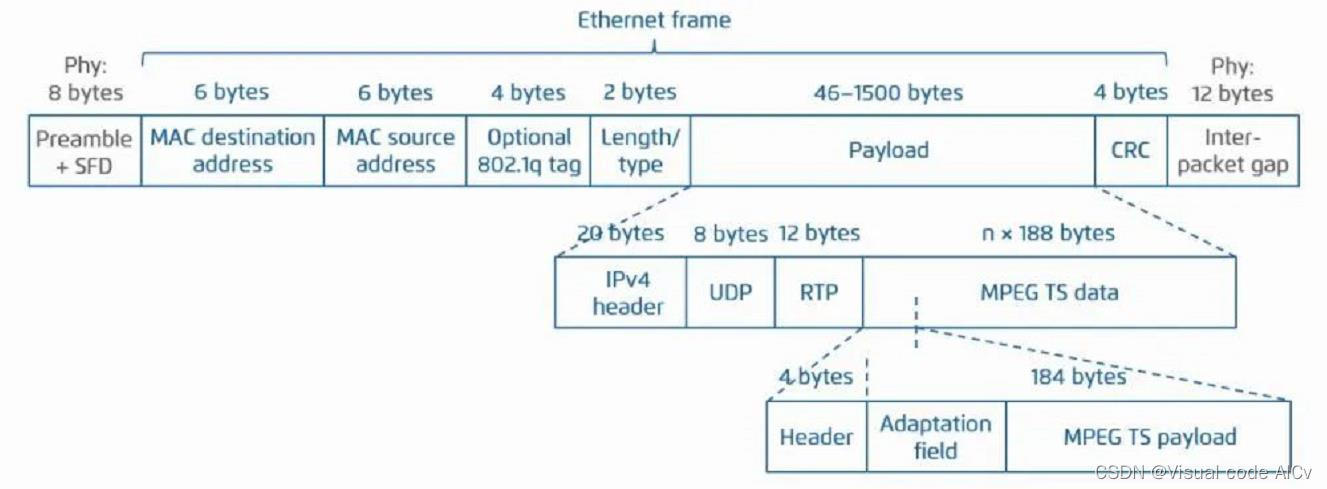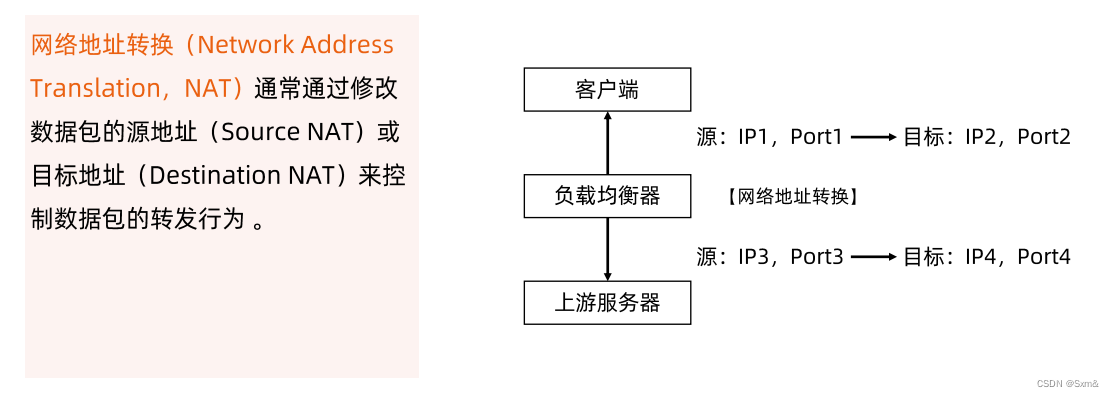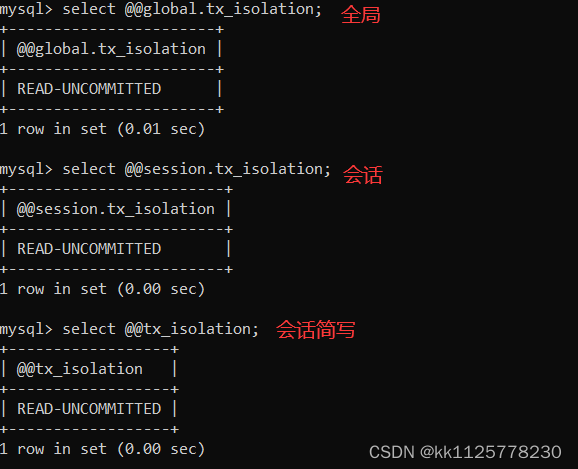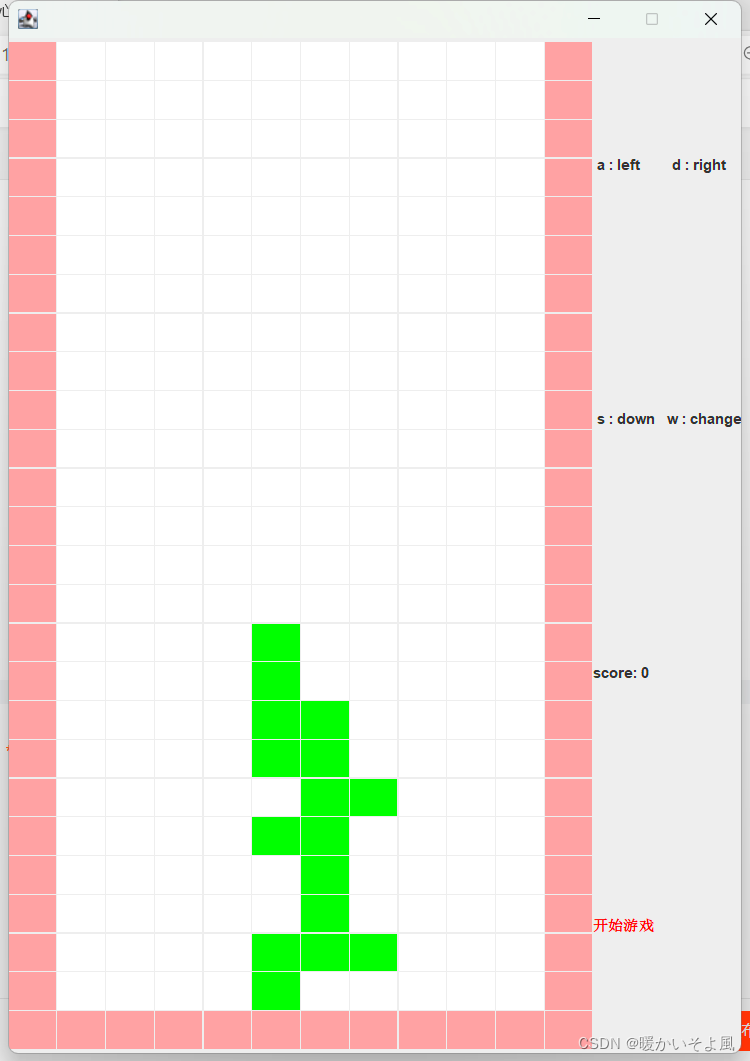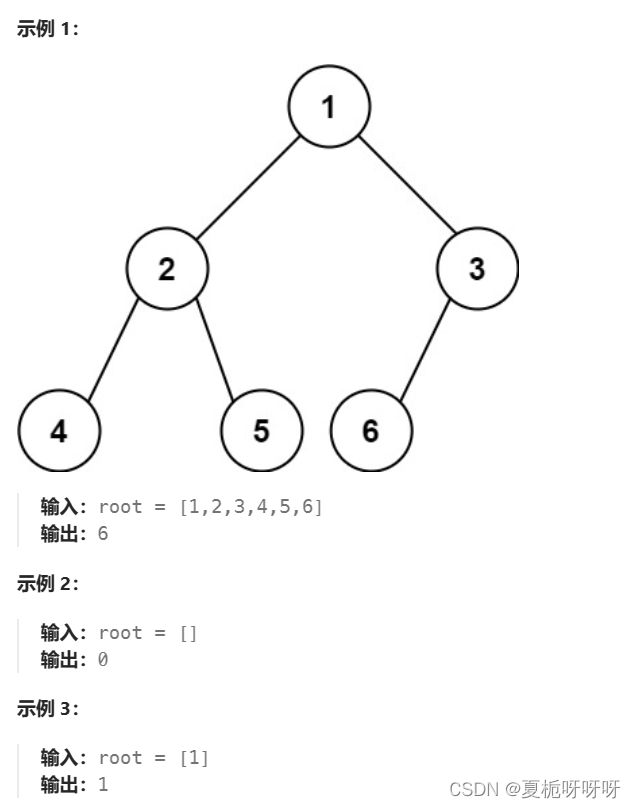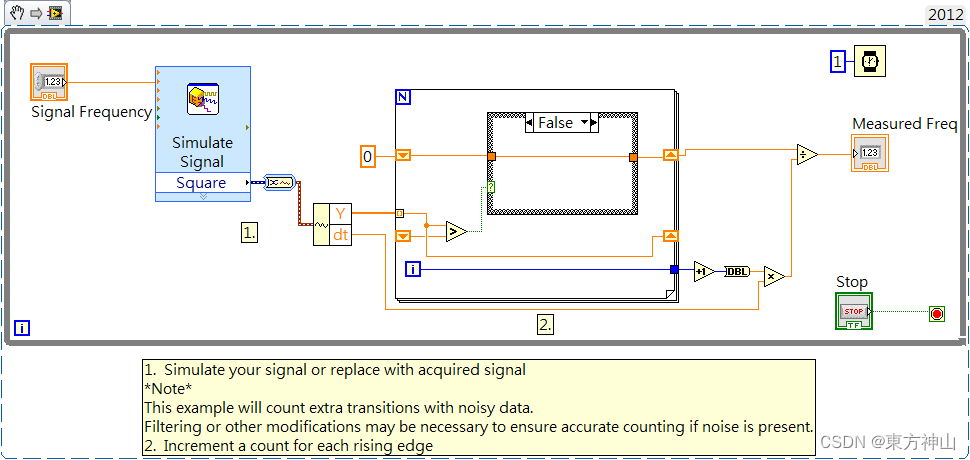引言
今天我们来实现RE2进行文本匹配,模型实现参考了官方代码https://github.com/alibaba-edu/simple-effective-text-matching-pytorch。
模型实现
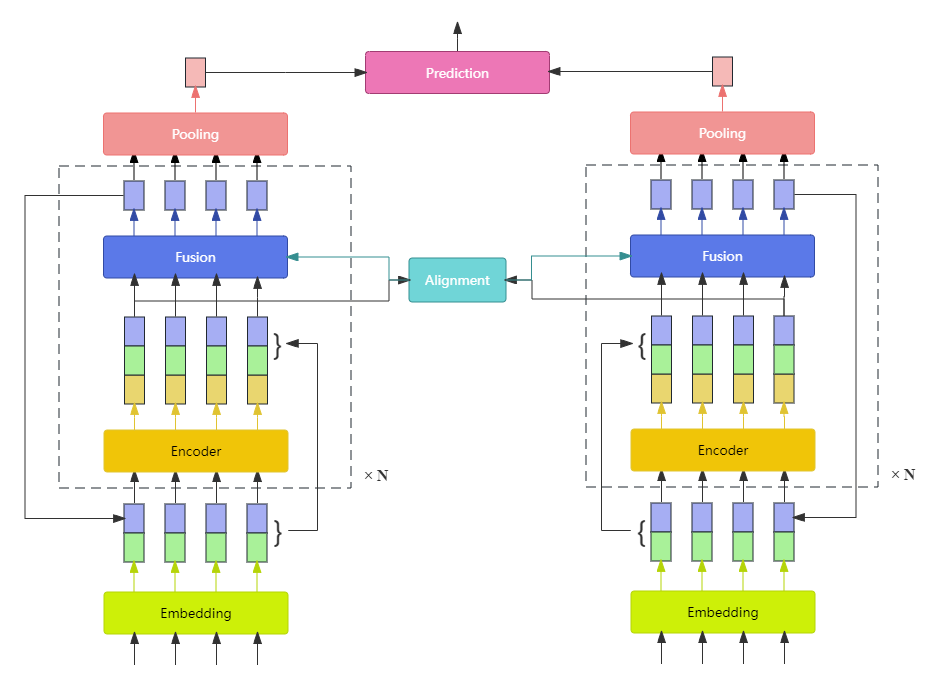
RE2模型架构如上图所示。它的输入是两个文本片段,所有组件参数除了预测层和对齐层外都是共享的。上图虚线框出来的为一个Block,堆叠了N个block,文本片段之间的block内部通过对齐层进行交互。block之间通过增加的残差层进行连接。
下面我们从底向上依次实现,实现过程中参考了官方实现。
Embedding
嵌入层很简单没有使用字符嵌入,就是简单的单词嵌入。
class Embedding(nn.Module):
def __init__(self, vocab_size: int, embedding_dim: int, dropout: float) -> None:
super().__init__()
self.embedding = nn.Embedding(vocab_size, embedding_dim, padding_idx=0)
self.dropout = nn.Dropout(dropout)
def forward(self, x: Tensor) -> Tensor:
"""
Args:
x (Tensor): (batch_size, seq_len)
Returns:
Tensor: (batch_size, seq_len, embedding_dim)
"""
return self.dropout(self.embedding(x))
Encoder
GeLU
首先实现GeLU,它是RELU的变种,后来被用到BERT中。其函数图像如下所示:
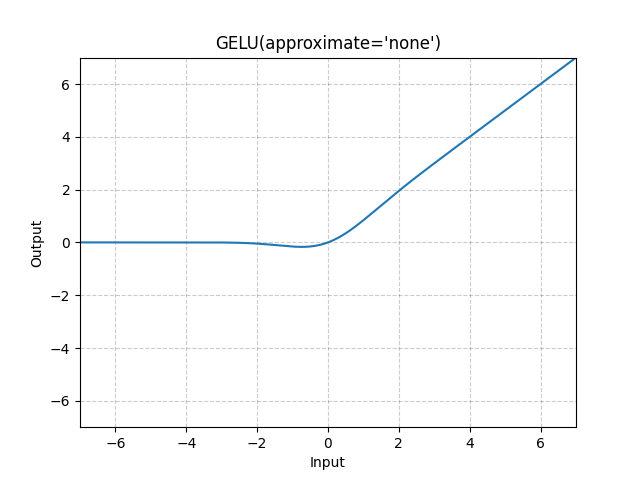
class GeLU(nn.Module):
def forward(self, x: Tensor) -> Tensor:
return 0.5 * x * (1.0 + torch.tanh(x * 0.7978845608 * (1.0 + 0.044715 * x * x)))
Linear
重写了线性层,activations开启GeLU激活。
class Linear(nn.Module):
def __init__(
self, in_features: int, out_features: int, activations: bool = True
) -> None:
super().__init__()
linear = nn.Linear(in_features, out_features)
modules = [weight_norm(linear)]
if activations:
modules.append(GeLU())
self.model = nn.Sequential(*modules)
self.reset_parameters(activations)
def reset_parameters(self, activations: bool) -> None:
linear = self.model[0]
nn.init.normal_(
linear.weight,
std=math.sqrt((2.0 if activations else 1.0) / linear.in_features),
)
nn.init.zeros_(linear.bias)
def forward(self, x):
return self.model(x)
nn.Conv1d
我们在比较聚合模型的实现中详细了解了torch.nn.Conv2d的实现以及CNN的一些基础概念。
这里我们通过torch.nn.Conv1d来实现论文中的多层卷积网络,本小结来详细了解Conv1d实现。
torch.nn.Conv1d
in_channels: 输入的通道数,文本中为嵌入维度
out_channels: 一个卷积核产生一个输出通道
kernel_size: 卷积核的大小
stride: 卷积步长,默认为1
padding: 填充,默认为0
bias(bool): 是否添加偏置,默认为True
我们以一个例子来说明它的计算过程,假设对于输入"W B G 是 冠 军",随机得到的嵌入为:
希望今天下午S13 WBG可以战胜T1。
import numpy as np
import torch.nn as nn
import torch
batch_size = 1
seq_len = 6
embed_size = 3
input_tensor = torch.rand(batch_size, seq_len, embed_size)
print(input_tensor)
print(input_tensor.shape)
tensor([[[0.9291, 0.8333, 0.5160],
[0.0543, 0.8149, 0.5704],
[0.7831, 0.2263, 0.9279],
[0.0898, 0.0758, 0.4401],
[0.4321, 0.2098, 0.6666],
[0.6183, 0.0609, 0.2330]]])
torch.Size([1, 6, 3])
此时每个字符对应一个3维的嵌入向量,分别为:
W — [0.9291, 0.8333, 0.5160]
B — [0.0543, 0.8149, 0.5704]
G — [0.7831, 0.2263, 0.9279]
是 — [0.0898, 0.0758, 0.4401]
冠 — [0.4321, 0.2098, 0.6666]
军 — [0.6183, 0.0609, 0.2330]
但是Conv1d需要in_channels即嵌入维度为仅在batch_size后第一个位置,由[1, 6, 3]变成[1, 3, 6]。
input_tensor = input_tensor.permute(0, 2, 1)
# (batch_size, embed_size, seq_len)
图示如下:

文章还没发,结果被3:0了。
然后我们定义一个一维卷积:
input_channels = embed_size # 等于embed_size
output_channels = 2
kernel_size = 2 # kernel_size
conv1d = nn.Conv1d(in_channels=input_channels, out_channels=output_channels, kernel_size=kernel_size)
我们可以打印出来filter权重矩阵:
print(conv1d.weight)
print(conv1d.weight.shape)
Parameter containing:
tensor([[[ 0.0025, 0.3353],
[ 0.0620, -0.3916],
[-0.3458, -0.0610]],
[[-0.1731, -0.0787],
[-0.0419, -0.2555],
[-0.1429, 0.1656]]], requires_grad=True)
torch.Size([2, 3, 2])
filter 权重的大小为 (2,3,2) shape[0]=2是filter个数;shape[1]=3是输入嵌入大小;shape[2]=2是filter大小。
默认是添加了偏置,一个filter一个偏置:
Parameter containing:
tensor([ 0.3760, -0.2881], requires_grad=True)
torch.Size([2])
我们这里有两个filter,所以有两个偏置。因为这里kernel_size=2,且步长stride=1,所以一个filter是如下的方式框住了两个字符嵌入,并且每次向右移动一格:

此时第一个filter的卷积操作计算为:
sum([[0.9291, 0.0543], [[0.0025, 0.3353],
[0.8333, 0.8149], * [0.0620, -0.3916], + 0.3760(bias)
[0.5160, 0.5704]] [-0.3458, -0.0610])
第一个filter权重和这两个嵌入进行逐位置乘法产生一个标量(sum),最后加上第一个filter的偏置。
通过代码实现为:
# 开始计算卷积
# 前两个嵌入与卷积核权重逐元素乘法
result = input_tensor[:,:,:2]*conv1d.weight
print(result)
# 结果求和再加上偏置
print(torch.sum(result[0]) + conv1d.bias[0])
print(torch.sum(result[1]) + conv1d.bias[1])
tensor([[[ 0.0024, 0.0182],
[ 0.0517, -0.3191],
[-0.1784, -0.0348]],
[[-0.1608, -0.0043],
[-0.0349, -0.2082],
[-0.0737, 0.0944]]], grad_fn=<MulBackward0>)
tensor(-0.0841, grad_fn=<AddBackward0>) # 第一个filter的结果
tensor(-0.6756, grad_fn=<AddBackward0>) # 第二个filter的结果
这是第一次卷积的结果,第二次卷积把红框向右移动一格,又会有一个结果。

最终移动到输入的最后一个位置计算完毕:

共需要计算5次,因此最终一个filter会输出5个标量,共有2个filter,批大小为1。
如果用代码实现的话:
output = conv1d(input_tensor)
print(output)
print(output.shape)
tensor([[[-0.0841, 0.3468, 0.0447, 0.2508, 0.3288],
[-0.6756, -0.3790, -0.5193, -0.3470, -0.4926]]],
grad_fn=<ConvolutionBackward0>)
torch.Size([1, 2, 5])
可以看到output的形状为[1, 2, 5],第一列的计算结果和我们上面的一致。
shape[0]=1是批次内样本个数;``shape[1]=2是filter个数,也是想要输出的channel数;shape[2]=5`是卷积后的维度。
这里(忽略dilation)卷积后的维度大小由卷积核大小kernel_size、步长stride、填充padding以及输入序列长度seq_len决定:
⌊
seq_len
+
2
×
padding
−
kernel_size
stride
+
1
⌋
\left\lfloor \frac{\text{seq\_len} + 2 \times\text{padding} - \text{kernel\_size}}{\text{stride}} + 1\right\rfloor
⌊strideseq_len+2×padding−kernel_size+1⌋
其中 ⌊ ∗ ⌋ \lfloor * \rfloor ⌊∗⌋表示向下取整。
我们可以代入上面的参数验证一下:
6
+
2
×
0
−
2
1
+
1
=
6
+
0
−
2
+
1
=
5
\frac{6 + 2\times 0 - 2}{1} + 1 = 6+0-2+1=5
16+2×0−2+1=6+0−2+1=5
结果是5和输出一致。
Conv1d
下面实现RE2的多层卷积网络,首先是一个改写的Conv1d,用weight_norm进行权重归一化,采用GeLU激活函数。
class Conv1d(nn.Module):
def __init__(
self, in_channels: int, out_channels: int, kernel_sizes: list[int]
) -> None:
"""
Args:
in_channels (int): the embedding_dim
out_channels (int): number of filters
kernel_sizes (list[int]): the size of kernel
"""
super().__init__()
out_channels = out_channels // len(kernel_sizes)
convs = []
# L_in is seq_len, L_out is output_dim of conv
# L_out = (L_in + 2 * padding - kernel_size + 1)
# and padding=(kernel_size - 1) // 2
# L_out = (L_in + kernel_size - 1 - kernel_size + 1) = L_in
for kernel_size in kernel_sizes:
conv = nn.Conv1d(
in_channels, out_channels, kernel_size, padding=(kernel_size - 1) // 2
)
convs.append(nn.Sequential(weight_norm(conv), GeLU()))
# output shape of each conv is (batch_size, out_channels(new), seq_len)
self.model = nn.ModuleList(convs)
self.reset_parameters()
def reset_parameters(self) -> None:
for seq in self.model:
conv = seq[0]
nn.init.normal_(
conv.weight,
std=math.sqrt(2.0 / (conv.in_channels * conv.kernel_size[0])),
)
nn.init.zeros_(conv.bias)
def forward(self, x: Tensor) -> Tensor:
"""
Args:
x (Tensor): shape (batch_size, embedding_dim, seq_len)
Returns:
Tensor:
"""
# back to (batch_size, out_channels, seq_len)
return torch.cat([encoder(x) for encoder in self.model], dim=1)
用out_channels // len(kernel_sizes)将输出大小拆分,最后用torch.cat将它们拼接回out_channels;
padding=(kernel_size - 1) // 2目的是使得卷积后的维度大小和输入的seq_len一致,这里需要kernel_size 是奇数,因为padding只能接收整数。
weight_norm将权重分解为大小和方向,可以加速训练过程并提高模型的泛化能力。保留原先的权重方向,大小由权重归一化层自己学习:
w
=
g
v
∣
∣
v
∣
∣
\pmb w = g\frac{\pmb v}{||\pmb v||}
w=g∣∣v∣∣v
Encoder实现
class Encoder(nn.Module):
def __init__(
self,
input_size: int,
hidden_size: int,
kernel_sizes: list[int],
encoder_layers: int,
dropout: float,
) -> None:
"""_summary_
Args:
input_size (int): embedding_dim or embedding_dim + hidden_size
hidden_size (int): hidden size
kernel_sizes (list[int]): the size of kernels
encoder_layers (int): number of conv layers
dropout (float): dropout ratio
"""
super().__init__()
self.encoders = nn.ModuleList(
[
Conv1d(
in_channels=input_size if i == 0 else hidden_size,
out_channels=hidden_size,
kernel_sizes=kernel_sizes,
)
for i in range(encoder_layers)
]
)
self.dropout = nn.Dropout(dropout)
def forward(self, x: Tensor, mask: Tensor) -> Tensor:
"""forward in encoder
Args:
x (Tensor): (batch_size, seq_len, input_size)
mask (Tensor): (batch_size, seq_len, 1)
Returns:
Tensor: _description_
"""
# x (batch_size, input_size, seq_len)
x = x.transpose(1, 2)
# mask (batch_size, 1, seq_len)
mask = mask.transpose(1, 2)
for i, encoder in enumerate(self.encoders):
# fills elements of x with 0.0 where mask is False
x.masked_fill_(~mask, 0.0)
# using dropout
if i > 0:
x = self.dropout(x)
# returned x (batch_size, hidden_size, seq_len)
x = encoder(x)
# apply dropout
x = self.dropout(x)
# (batch_size, seq_len, hidden_size)
return x.transpose(1, 2)
这里用多层Conv1d作为编码器,要注意第0层和其他层的区别,第0层的嵌入维度是input_size即``embedding_size,经过第0层的Conv1d后维度变成两hidden_size,所以后续层参数in_channels为hidden_size`。
这里用x.masked_fill_(~mask, 0.0)设置mask矩阵中的填充位为0。
不采用RNN作为编码器,作者认为RNN速度慢且没有带来性能上的提升。
Alignment
然后实现对齐层,所谓的对齐就是让两个序列进行交互,这里采用基于注意力交互的方式。
class Alignment(nn.Module):
def __init__(
self, input_size: int, hidden_size: int, dropout: float, project_func: str
) -> None:
"""
Args:
input_size (int): embedding_dim + hidden_size or embedding_dim + hidden_size * 2
hidden_size (int): hidden size
dropout (float): dropout ratio
project_func (str): identity or linear
"""
super().__init__()
self.temperature = nn.Parameter(torch.tensor(1 / math.sqrt(hidden_size)))
if project_func != "identity":
self.projection = nn.Sequential(
nn.Dropout(dropout), Linear(input_size, hidden_size)
)
else:
self.projection = nn.Identity()
def forward(self, a: Tensor, b: Tensor, mask_a: Tensor, mask_b: Tensor) -> Tensor:
"""
Args:
a (Tensor): (batch_size, seq_len, input_size)
b (Tensor): (batch_size, seq_len, input_size)
mask_a (Tensor): (batch_size, seq_len, 1)
mask_b (Tensor): (batch_size, seq_len, 1)
Returns:
Tensor: _description_
"""
# if projection == 'linear' : self.projection(*) -> (batch_size, seq_len, hidden_size) -> transpose(*) -> (batch_size, hidden_size, seq_len)
# if projection == 'identity' : self.projection(*) -> (batch_size, seq_len, input_size) -> transpose(*) -> (batch_size, input_size, seq_len)
# attn (batch_size, seq_len_a, seq_len_b)
attn = (
torch.matmul(self.projection(a), self.projection(b).transpose(1, 2))
* self.temperature
)
# mask (batch_size, seq_len_a, seq_len_b)
mask = torch.matmul(mask_a.float(), mask_b.transpose(1, 2).float())
mask = mask.bool()
# fills elements of x with 0.0(after exp) where mask is False
attn.masked_fill_(~mask, -1e7)
# attn_a (batch_size, seq_len_a, seq_len_b)
attn_a = F.softmax(attn, dim=1)
# attn_b (batch_size, seq_len_a, seq_len_b)
attn_b = F.softmax(attn, dim=2)
# feature_b (batch_size, seq_len_b, seq_len_a) x (batch_size, seq_len_a, input_size)
# -> (batch_size, seq_len_b, input_size)
feature_b = torch.matmul(attn_a.transpose(1, 2), a)
# feature_a (batch_size, seq_len_a, seq_len_b) x (batch_size, seq_len_b, input_size)
# -> (batch_size, seq_len_a, input_size)
feature_a = torch.matmul(attn_b, b)
return feature_a, feature_b
增强残差连接
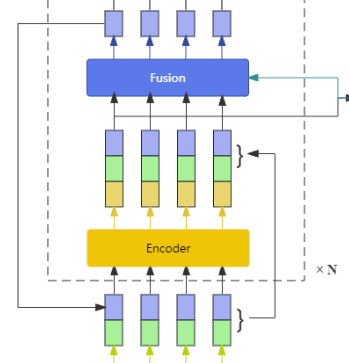
class AugmentedResidualConnection(nn.Module):
def __init__(self) -> None:
super().__init__()
def forward(self, x: Tensor, res: Tensor, i: int) -> Tensor:
"""
Args:
x (Tensor): the output of pre block (batch_size, seq_len, hidden_size)
res (Tensor): (batch_size, seq_len, embedding_size) or (batch_size, seq_len, embedding_size + hidden_size)
res[:,:,hidden_size:] is the output of Embedding layer
res[:,:,:hidden_size] is the output of previous two block
i (int): layer index
Returns:
Tensor: (batch_size, seq_len, hidden_size + embedding_size)
"""
if i == 1:
# (batch_size, seq_len, hidden_size + embedding_size)
return torch.cat([x, res], dim=-1)
hidden_size = x.size(-1)
# (res[:, :, :hidden_size] + x) is the summation of the output of previous two blocks
# x (batch_size, seq_len, hidden_size)
x = (res[:, :, :hidden_size] + x) * math.sqrt(0.5)
# (batch_size, seq_len, hidden_size + embedding_size)
return torch.cat([x, res[:, :, hidden_size:]], dim=-1)
为了给对齐处理提供更丰富的特征,RE2采用了一个增强版的残差连接,用于每个块之间。
对于一个长为 l l l的序列,标记第 n n n个块的输入和输出分别为 x ( n ) = ( x 1 ( n ) , x 2 ( n ) , ⋯ , x l ( n ) ) x^{(n)} = (x^{(n)}_1,x^{(n)}_2,\cdots,x^{(n)}_l) x(n)=(x1(n),x2(n),⋯,xl(n))和 o ( n ) = ( o 1 ( n ) , o 2 ( n ) , ⋯ , o l ( n ) ) o^{(n)} = (o^{(n)}_1,o^{(n)}_2,\cdots,o^{(n)}_l) o(n)=(o1(n),o2(n),⋯,ol(n)), o ( 0 ) o^{(0)} o(0)表示零向量序列。
第一个块的输入
x
(
1
)
x^{(1)}
x(1)是嵌入层的输出,由图1中的空心矩形表示;第
n
(
n
≥
2
)
n(n\geq 2)
n(n≥2)块的输入
x
(
n
)
x^{(n)}
x(n)是第一块的输入
x
(
1
)
x^{(1)}
x(1)和前面两块的输出进行求和后的拼接(图中的对角斜线矩形):
x
i
(
n
)
=
[
x
i
(
1
)
;
o
i
(
n
−
1
)
+
o
i
(
n
−
2
)
]
x^{(n)}_i =[x^{(1)}_i;o^{(n-1)}_i + o^{(n-2)}_i ]
xi(n)=[xi(1);oi(n−1)+oi(n−2)]
公式更加清楚一点,第
n
n
n块的输入是由两个向量拼接而来,第一个向量是第一块的输入,第二个向量是第
n
n
n块前面两块的输出进行(元素级)累加。这个就是增强的残差连接。
融合层
class Fusion(nn.Module):
def __init__(self, input_size: int, hidden_size: int, dropout: float) -> None:
"""
Args:
input_size (int): embedding_dim + hidden_size or embedding_dim + hidden_size * 2
hidden_size (int): hidden size
dropout (float): dropout ratio
"""
super().__init__()
self.dropout = nn.Dropout(dropout)
self.fusion1 = Linear(input_size * 2, hidden_size, activations=True)
self.fusion2 = Linear(input_size * 2, hidden_size, activations=True)
self.fusion3 = Linear(input_size * 2, hidden_size, activations=True)
self.fusion = Linear(hidden_size * 3, hidden_size, activations=True)
def forward(self, x: Tensor, align: Tensor) -> Tensor:
"""
Args:
x (Tensor): input (batch_size, seq_len, input_size)
align (Tensor): output of Alignment (batch_size, seq_len, input_size)
Returns:
Tensor: (batch_size, seq_len, hidden_size)
"""
# x1 (batch_size, seq_len, hidden_size)
x1 = self.fusion1(torch.cat([x, align], dim=-1))
# x2 (batch_size, seq_len, hidden_size)
x2 = self.fusion1(torch.cat([x, x - align], dim=-1))
# x3 (batch_size, seq_len, hidden_size)
x3 = self.fusion1(torch.cat([x, x * align], dim=-1))
# x (batch_size, seq_len, hidden_size * 3)
x = torch.cat([x1, x2, x3], dim=-1)
x = self.dropout(x)
# (batch_size, seq_len, hidden_size)
return self.fusion(x)
融合层通过三个方面比较了局部和对齐表示(分别为对齐层的输入和输出),然后对它们进行融合。
对于第一个序列来说,融合层的输出
a
ˉ
\bar a
aˉ计算为:
a
ˉ
i
1
=
G
1
(
[
a
i
;
a
i
′
]
)
,
a
ˉ
i
2
=
G
2
(
[
a
i
;
a
i
−
a
i
′
]
)
,
a
ˉ
i
3
=
G
3
(
[
a
i
;
a
i
∘
a
i
′
]
)
,
a
ˉ
i
=
G
(
[
a
ˉ
i
1
;
a
ˉ
i
2
;
a
ˉ
i
3
]
)
,
\begin{aligned} \bar a_i^1 &= G_1([a_i;a_i^\prime]), \\ \bar a_i^2 &= G_2([a_i;a_i - a_i^\prime]), \\ \bar a_i^3 &= G_3([a_i;a_i \circ a_i^\prime]), \\ \bar a_i &= G([\bar a_i^1;\bar a_i^2;\bar a_i^3]), \end{aligned}
aˉi1aˉi2aˉi3aˉi=G1([ai;ai′]),=G2([ai;ai−ai′]),=G3([ai;ai∘ai′]),=G([aˉi1;aˉi2;aˉi3]),
这里
G
1
,
G
2
,
G
3
G_1,G_2,G_3
G1,G2,G3和
G
G
G都是参数独立的单层前馈网络;
∘
\circ
∘表示元素级乘法。
差操作( − - −)强调了两个向量的区别,而乘操作强调了它们的相似。对于另一个序列 b ˉ \bar b bˉ的计算是类似的。
这些操作和ESIM有点类似,增加了一个前馈网络。
完了之后通过一个池化层得到定长向量。
池化层
class Pooling(nn.Module):
def forward(self, x: Tensor, mask: Tensor) -> Tensor:
"""
Args:
x (Tensor): (batch_size, seq_len, hidden_size)
mask (Tensor): (batch_size, seq_len, 1)
Returns:
Tensor: (batch_size, hidden_size)
"""
# max returns a namedtuple (values, indices), we only need values
return x.masked_fill(~mask, -float("inf")).max(dim=1)[0]
池化层取时间步维度上的最大值。
预测层
class Prediction(nn.Module):
def __init__(self, hidden_size: int, num_classes: int, dropout: float) -> None:
super().__init__()
self.dense = nn.Sequential(
nn.Dropout(dropout),
Linear(hidden_size * 4, hidden_size, activations=True),
nn.Dropout(dropout),
Linear(hidden_size, num_classes),
)
def forward(self, a: Tensor, b: Tensor) -> Tensor:
"""
Args:
a (Tensor): (batch_size, hidden_size)
b (Tensor): (batch_size, hidden_size)
Returns:
Tensor: (batch_size, num_classes)
"""
return self.dense(torch.cat([a, b, a - b, a * b], dim=-1))
预测层比较简单,再次对输入向量进行了一个融合:
y
^
=
H
(
[
v
1
;
v
2
;
v
1
−
v
2
;
v
1
∘
v
2
]
)
\hat {\pmb y} = H([v_1;v_2;v_1-v_2;v1 \circ v_2])
y^=H([v1;v2;v1−v2;v1∘v2])
RE2实现
RE2的实现时上述层的堆叠:
class RE2(nn.Module):
def __init__(self, args) -> None:
super().__init__()
self.embedding = Embedding(args.vocab_size, args.embedding_dim, args.dropout)
self.connection = AugmentedResidualConnection()
self.blocks = nn.ModuleList(
[
nn.ModuleDict(
{
"encoder": Encoder(
args.embedding_dim
if i == 0
else args.embedding_dim + args.hidden_size,
args.hidden_size,
args.kernel_sizes,
args.encoder_layers,
args.dropout,
),
"alignment": Alignment(
args.embedding_dim + args.hidden_size
if i == 0
else args.embedding_dim + args.hidden_size * 2,
args.hidden_size,
args.dropout,
args.project_func,
),
"fusion": Fusion(
args.embedding_dim + args.hidden_size
if i == 0
else args.embedding_dim + args.hidden_size * 2,
args.hidden_size,
args.dropout,
),
}
)
for i in range(args.num_blocks)
]
)
self.pooling = Pooling()
self.prediction = Prediction(args.hidden_size, args.num_classes, args.dropout)
def forward(self, a: Tensor, b: Tensor, mask_a: Tensor, mask_b: Tensor) -> Tensor:
"""
Args:
a (Tensor): (batch_size, seq_len)
b (Tensor): (batch_size, seq_len)
mask_a (Tensor): (batch_size, seq_len, 1)
mask_b (Tensor): (batch_size, seq_len, 1)
Returns:
Tensor: (batch_size, num_classes)
"""
# a (batch_size, seq_len, embedding_dim)
a = self.embedding(a)
# b (batch_size, seq_len, embedding_dim)
b = self.embedding(b)
res_a, res_b = a, b
for i, block in enumerate(self.blocks):
if i > 0:
# a (batch_size, seq_len, embedding_dim + hidden_size)
a = self.connection(a, res_a, i)
# b (batch_size, seq_len, embedding_dim + hidden_size)
b = self.connection(b, res_b, i)
# now embeddings saved to res_a[:,:,hidden_size:]
res_a, res_b = a, b
# a_enc (batch_size, seq_len, hidden_size)
a_enc = block["encoder"](a, mask_a)
# b_enc (batch_size, seq_len, hidden_size)
b_enc = block["encoder"](b, mask_b)
# concating the input and output of encoder
# a (batch_size, seq_len, embedding_dim + hidden_size or embedding_dim + hidden_size * 2)
a = torch.cat([a, a_enc], dim=-1)
# b (batch_size, seq_len, embedding_dim + hidden_size or embedding_dim + hidden_size * 2)
b = torch.cat([b, b_enc], dim=-1)
# align_a (batch_size, seq_len, embedding_dim + hidden_size or embedding_dim + hidden_size * 2)
# align_b (batch_size, seq_len, embedding_dim + hidden_size or embedding_dim + hidden_size * 2)
align_a, align_b = block["alignment"](a, b, mask_a, mask_b)
# a (batch_size, seq_len, hidden_size)
a = block["fusion"](a, align_a)
# b (batch_size, seq_len, hidden_size)
b = block["fusion"](b, align_b)
# a (batch_size, hidden_size)
a = self.pooling(a, mask_a)
# b (batch_size, hidden_size)
b = self.pooling(b, mask_b)
# (batch_size, num_classes)
return self.prediction(a, b)
注意不同块之间输入维度的区别。
数据准备
在→文章←中数据准备这部分内容有详细的解释。
from collections import defaultdict
from tqdm import tqdm
import numpy as np
import json
from torch.utils.data import Dataset
import pandas as pd
from typing import Tuple
UNK_TOKEN = "<UNK>"
PAD_TOKEN = "<PAD>"
class Vocabulary:
"""Class to process text and extract vocabulary for mapping"""
def __init__(self, token_to_idx: dict = None, tokens: list[str] = None) -> None:
"""
Args:
token_to_idx (dict, optional): a pre-existing map of tokens to indices. Defaults to None.
tokens (list[str], optional): a list of unique tokens with no duplicates. Defaults to None.
"""
assert any(
[tokens, token_to_idx]
), "At least one of these parameters should be set as not None."
if token_to_idx:
self._token_to_idx = token_to_idx
else:
self._token_to_idx = {}
if PAD_TOKEN not in tokens:
tokens = [PAD_TOKEN] + tokens
for idx, token in enumerate(tokens):
self._token_to_idx[token] = idx
self._idx_to_token = {idx: token for token, idx in self._token_to_idx.items()}
self.unk_index = self._token_to_idx[UNK_TOKEN]
self.pad_index = self._token_to_idx[PAD_TOKEN]
@classmethod
def build(
cls,
sentences: list[list[str]],
min_freq: int = 2,
reserved_tokens: list[str] = None,
) -> "Vocabulary":
"""Construct the Vocabulary from sentences
Args:
sentences (list[list[str]]): a list of tokenized sequences
min_freq (int, optional): the minimum word frequency to be saved. Defaults to 2.
reserved_tokens (list[str], optional): the reserved tokens to add into the Vocabulary. Defaults to None.
Returns:
Vocabulary: a Vocubulary instane
"""
token_freqs = defaultdict(int)
for sentence in tqdm(sentences):
for token in sentence:
token_freqs[token] += 1
unique_tokens = (reserved_tokens if reserved_tokens else []) + [UNK_TOKEN]
unique_tokens += [
token
for token, freq in token_freqs.items()
if freq >= min_freq and token != UNK_TOKEN
]
return cls(tokens=unique_tokens)
def __len__(self) -> int:
return len(self._idx_to_token)
def __getitem__(self, tokens: list[str] | str) -> list[int] | int:
"""Retrieve the indices associated with the tokens or the index with the single token
Args:
tokens (list[str] | str): a list of tokens or single token
Returns:
list[int] | int: the indices or the single index
"""
if not isinstance(tokens, (list, tuple)):
return self._token_to_idx.get(tokens, self.unk_index)
return [self.__getitem__(token) for token in tokens]
def lookup_token(self, indices: list[int] | int) -> list[str] | str:
"""Retrive the tokens associated with the indices or the token with the single index
Args:
indices (list[int] | int): a list of index or single index
Returns:
list[str] | str: the corresponding tokens (or token)
"""
if not isinstance(indices, (list, tuple)):
return self._idx_to_token[indices]
return [self._idx_to_token[index] for index in indices]
def to_serializable(self) -> dict:
"""Returns a dictionary that can be serialized"""
return {"token_to_idx": self._token_to_idx}
@classmethod
def from_serializable(cls, contents: dict) -> "Vocabulary":
"""Instantiates the Vocabulary from a serialized dictionary
Args:
contents (dict): a dictionary generated by `to_serializable`
Returns:
Vocabulary: the Vocabulary instance
"""
return cls(**contents)
def __repr__(self):
return f"<Vocabulary(size={len(self)})>"
class TMVectorizer:
"""The Vectorizer which vectorizes the Vocabulary"""
def __init__(self, vocab: Vocabulary, max_len: int) -> None:
"""
Args:
vocab (Vocabulary): maps characters to integers
max_len (int): the max length of the sequence in the dataset
"""
self.vocab = vocab
self.max_len = max_len
self.padding_index = vocab.pad_index
def _vectorize(self, indices: list[int], vector_length: int = -1) -> np.ndarray:
"""Vectorize the provided indices
Args:
indices (list[int]): a list of integers that represent a sequence
vector_length (int, optional): an arugment for forcing the length of index vector. Defaults to -1.
Returns:
np.ndarray: the vectorized index array
"""
if vector_length <= 0:
vector_length = len(indices)
vector = np.zeros(vector_length, dtype=np.int64)
if len(indices) > vector_length:
vector[:] = indices[:vector_length]
else:
vector[: len(indices)] = indices
vector[len(indices) :] = self.padding_index
return vector
def _get_indices(self, sentence: list[str]) -> list[int]:
"""Return the vectorized sentence
Args:
sentence (list[str]): list of tokens
Returns:
indices (list[int]): list of integers representing the sentence
"""
return [self.vocab[token] for token in sentence]
def vectorize(
self, sentence: list[str], use_dataset_max_length: bool = True
) -> np.ndarray:
"""
Return the vectorized sequence
Args:
sentence (list[str]): raw sentence from the dataset
use_dataset_max_length (bool): whether to use the global max vector length
Returns:
the vectorized sequence with padding
"""
vector_length = -1
if use_dataset_max_length:
vector_length = self.max_len
indices = self._get_indices(sentence)
vector = self._vectorize(indices, vector_length=vector_length)
return vector
@classmethod
def from_serializable(cls, contents: dict) -> "TMVectorizer":
"""Instantiates the TMVectorizer from a serialized dictionary
Args:
contents (dict): a dictionary generated by `to_serializable`
Returns:
TMVectorizer:
"""
vocab = Vocabulary.from_serializable(contents["vocab"])
max_len = contents["max_len"]
return cls(vocab=vocab, max_len=max_len)
def to_serializable(self) -> dict:
"""Returns a dictionary that can be serialized
Returns:
dict: a dict contains Vocabulary instance and max_len attribute
"""
return {"vocab": self.vocab.to_serializable(), "max_len": self.max_len}
def save_vectorizer(self, filepath: str) -> None:
"""Dump this TMVectorizer instance to file
Args:
filepath (str): the path to store the file
"""
with open(filepath, "w") as f:
json.dump(self.to_serializable(), f)
@classmethod
def load_vectorizer(cls, filepath: str) -> "TMVectorizer":
"""Load TMVectorizer from a file
Args:
filepath (str): the path stored the file
Returns:
TMVectorizer:
"""
with open(filepath) as f:
return TMVectorizer.from_serializable(json.load(f))
class TMDataset(Dataset):
"""Dataset for text matching"""
def __init__(self, text_df: pd.DataFrame, vectorizer: TMVectorizer) -> None:
"""
Args:
text_df (pd.DataFrame): a DataFrame which contains the processed data examples
vectorizer (TMVectorizer): a TMVectorizer instance
"""
self.text_df = text_df
self._vectorizer = vectorizer
def __getitem__(
self, index: int
) -> Tuple[np.ndarray, np.ndarray, np.ndarray, np.ndarray, int]:
row = self.text_df.iloc[index]
vector1 = self._vectorizer.vectorize(row.sentence1)
vector2 = self._vectorizer.vectorize(row.sentence2)
mask1 = vector1 != self._vectorizer.padding_index
mask2 = vector2 != self._vectorizer.padding_index
return (vector1, vector2, mask1, mask2, row.label)
def get_vectorizer(self) -> TMVectorizer:
return self._vectorizer
def __len__(self) -> int:
return len(self.text_df)
和之前的文章差不多,唯一的区别增加了填充位置的mask。
模型训练
learning_rate=1e-3,
batch_size=256,
num_epochs=10,
max_len=50,
embedding_dim=300,
hidden_size=150,
encoder_layers=2,
num_blocks=2,
kernel_sizes=[3],
dropout=0.2,
min_freq=2,
project_func="linear",
grad_clipping=2.0,
print_every=300,
num_classes=2,
经过几次实验,表现最好的配置如上所示,学习率为0.2;梯度裁剪为2.0。
如论文所述,增加了梯度裁剪,学习率指数衰减通过用AdamW替换。
验证和训练函数为:
def evaluate(
data_iter: DataLoader, model: nn.Module
) -> Tuple[float, float, float, float]:
y_list, y_pred_list = [], []
model.eval()
for x1, x2, mask1, mask2, y in tqdm(data_iter):
x1 = x1.to(device).long()
x2 = x2.to(device).long()
mask1 = mask1.to(device).bool().unsqueeze(2)
mask2 = mask2.to(device).bool().unsqueeze(2)
y = y.float().to(device)
output = model(x1, x2, mask1, mask2)
pred = torch.argmax(output, dim=1).long()
y_pred_list.append(pred)
y_list.append(y)
y_pred = torch.cat(y_pred_list, 0)
y = torch.cat(y_list, 0)
acc, p, r, f1 = metrics(y, y_pred)
return acc, p, r, f1
def train(
data_iter: DataLoader,
model: nn.Module,
criterion: nn.CrossEntropyLoss,
optimizer: torch.optim.Optimizer,
grad_clipping: float,
print_every: int = 500,
verbose=True,
) -> None:
model.train()
for step, (x1, x2, mask1, mask2, y) in enumerate(tqdm(data_iter)):
x1 = x1.to(device).long()
x2 = x2.to(device).long()
mask1 = mask1.to(device).bool().unsqueeze(2)
mask2 = mask2.to(device).bool().unsqueeze(2)
y = torch.LongTensor(y).to(device)
output = model(x1, x2, mask1, mask2)
loss = criterion(output, y)
optimizer.zero_grad()
loss.backward()
torch.nn.utils.clip_grad_norm_(model.parameters(), grad_clipping)
optimizer.step()
if verbose and (step + 1) % print_every == 0:
pred = torch.argmax(output, dim=1).long()
acc, p, r, f1 = metrics(y, pred)
print(
f" TRAIN iter={step+1} loss={loss.item():.6f} accuracy={acc:.3f} precision={p:.3f} recal={r:.3f} f1 score={f1:.4f}"
)
核心训练代码为:
model = RE2(args)
optimizer = torch.optim.AdamW(model.parameters(), lr=args.learning_rate)
criterion = nn.CrossEntropyLoss()
print(f"Model: {model}")
for epoch in range(args.num_epochs):
train(
train_data_loader,
model,
criterion,
optimizer,
args.grad_clipping,
print_every=args.print_every,
verbose=args.verbose,
)
print("Begin evalute on dev set.")
with torch.no_grad():
acc, p, r, f1 = evaluate(dev_data_loader, model)
print(
f"EVALUATE [{epoch+1}/{args.num_epochs}] accuracy={acc:.3f} precision={p:.3f} recal={r:.3f} f1 score={f1:.4f}"
)
model.eval()
acc, p, r, f1 = evaluate(test_data_loader, model)
print(f"TEST accuracy={acc:.3f} precision={p:.3f} recal={r:.3f} f1 score={f1:.4f}")
model = RE2(args)
print(f"Model: {model}")
model_saved_path = os.path.join(args.save_dir, args.model_state_file)
if args.reload_model and os.path.exists(model_saved_path):
model.load_state_dict(torch.load(args.model_saved_path))
print("Reloaded model")
else:
print("New model")
model = model.to(device)
model_save_path = os.path.join(
args.save_dir, f"{datetime.now().strftime('%Y%m%d%H%M%S')}-model.pth"
)
train_data_loader = DataLoader(
train_dataset, batch_size=args.batch_size, shuffle=True
)
dev_data_loader = DataLoader(dev_dataset, batch_size=args.batch_size)
test_data_loader = DataLoader(test_dataset, batch_size=args.batch_size)
optimizer = torch.optim.AdamW(model.parameters(), lr=args.learning_rate)
criterion = nn.CrossEntropyLoss()
for epoch in range(args.num_epochs):
train(
train_data_loader,
model,
criterion,
optimizer,
args.grad_clipping,
print_every=args.print_every,
verbose=args.verbose,
)
print("Begin evalute on dev set.")
with torch.no_grad():
acc, p, r, f1 = evaluate(dev_data_loader, model)
print(
f"EVALUATE [{epoch+1}/{args.num_epochs}] accuracy={acc:.3f} precision={p:.3f} recal={r:.3f} f1 score={f1:.4f}"
)
model.eval()
acc, p, r, f1 = evaluate(test_data_loader, model)
print(f"TEST accuracy={acc:.3f} precision={p:.3f} recal={r:.3f} f1 score={f1:.4f}")
Arguments : Namespace(dataset_csv='text_matching/data/lcqmc/{}.txt', vectorizer_file='vectorizer.json', model_state_file='model.pth', pandas_file='dataframe.{}.pkl', save_dir='D:\\workspace\\nlp-in-action\\text_matching\\re2\\model_storage', reload_model=False, cuda=True, learning_rate=0.001, batch_size=256, num_epochs=10, max_len=50, embedding_dim=300, hidden_size=150, encoder_layers=2, num_blocks=2, kernel_sizes=[3], dropout=0.2, min_freq=2, project_func='linear', grad_clipping=2.0, print_every=300, lr_decay_rate=0.95, num_classes=2, verbose=True)
Using device: cuda:0.
Loads cached dataframes.
Loads vectorizer file.
Model: RE2(
(embedding): Embedding(
(embedding): Embedding(35925, 300, padding_idx=0)
(dropout): Dropout(p=0.2, inplace=False)
)
(connection): AugmentedResidualConnection()
(blocks): ModuleList(
(0): ModuleDict(
(encoder): Encoder(
(encoders): ModuleList(
(0): Conv1d(
(model): ModuleList(
(0): Sequential(
(0): Conv1d(300, 150, kernel_size=(3,), stride=(1,), padding=(1,))
(1): GeLU()
)
)
)
(1): Conv1d(
(model): ModuleList(
(0): Sequential(
(0): Conv1d(150, 150, kernel_size=(3,), stride=(1,), padding=(1,))
(1): GeLU()
)
)
)
)
(dropout): Dropout(p=0.2, inplace=False)
)
(alignment): Alignment(
(projection): Sequential(
(0): Dropout(p=0.2, inplace=False)
(1): Linear(
(model): Sequential(
(0): Linear(in_features=450, out_features=150, bias=True)
(1): GeLU()
)
)
)
)
(fusion): Fusion(
(dropout): Dropout(p=0.2, inplace=False)
(fusion1): Linear(
(model): Sequential(
(0): Linear(in_features=900, out_features=150, bias=True)
(1): GeLU()
)
)
(fusion2): Linear(
(model): Sequential(
(0): Linear(in_features=900, out_features=150, bias=True)
(1): GeLU()
)
)
(fusion3): Linear(
(model): Sequential(
(0): Linear(in_features=900, out_features=150, bias=True)
(1): GeLU()
)
)
(fusion): Linear(
(model): Sequential(
(0): Linear(in_features=450, out_features=150, bias=True)
(1): GeLU()
)
)
)
)
(1): ModuleDict(
(encoder): Encoder(
(encoders): ModuleList(
(0): Conv1d(
(model): ModuleList(
(0): Sequential(
(0): Conv1d(450, 150, kernel_size=(3,), stride=(1,), padding=(1,))
(1): GeLU()
)
)
)
(1): Conv1d(
(model): ModuleList(
(0): Sequential(
(0): Conv1d(150, 150, kernel_size=(3,), stride=(1,), padding=(1,))
(1): GeLU()
)
)
)
)
(dropout): Dropout(p=0.2, inplace=False)
)
(alignment): Alignment(
(projection): Sequential(
(0): Dropout(p=0.2, inplace=False)
(1): Linear(
(model): Sequential(
(0): Linear(in_features=600, out_features=150, bias=True)
(1): GeLU()
)
)
)
)
(fusion): Fusion(
(dropout): Dropout(p=0.2, inplace=False)
(fusion1): Linear(
(model): Sequential(
(0): Linear(in_features=1200, out_features=150, bias=True)
(1): GeLU()
)
)
(fusion2): Linear(
(model): Sequential(
(0): Linear(in_features=1200, out_features=150, bias=True)
(1): GeLU()
)
)
(fusion3): Linear(
(model): Sequential(
(0): Linear(in_features=1200, out_features=150, bias=True)
(1): GeLU()
)
)
(fusion): Linear(
(model): Sequential(
(0): Linear(in_features=450, out_features=150, bias=True)
(1): GeLU()
)
)
)
)
)
(pooling): Pooling()
(prediction): Prediction(
(dense): Sequential(
(0): Dropout(p=0.2, inplace=False)
(1): Linear(
(model): Sequential(
(0): Linear(in_features=600, out_features=150, bias=True)
(1): GeLU()
)
)
(2): Dropout(p=0.2, inplace=False)
(3): Linear(
(model): Sequential(
(0): Linear(in_features=150, out_features=2, bias=True)
(1): GeLU()
)
)
)
)
)
New model
32%|█████████████████████████████████████████████████████▌ | 299/933 [01:16<02:38, 4.00it/s]
TRAIN iter=300 loss=0.273509 accuracy=0.887 precision=0.885 recal=0.926 f1 score=0.9049
64%|███████████████████████████████████████████████████████████████████████████████████████████████████████████▏ | 599/933 [02:31<01:23, 3.99it/s]
TRAIN iter=600 loss=0.296151 accuracy=0.859 precision=0.897 recal=0.861 f1 score=0.8784
96%|████████████████████████████████████████████████████████████████████████████████████████████████████████████████████████████████████████████████████████████████▉ | 899/933 [03:46<00:08, 4.00it/s]
TRAIN iter=900 loss=0.262893 accuracy=0.875 precision=0.887 recal=0.887 f1 score=0.8873
100%|███████████████████████████████████████████████████████████████████████████████████████████████████████████████████████████████████████████████████████████████████████| 933/933 [03:54<00:00, 3.98it/s]
Begin evalute on dev set.
100%|█████████████████████████████████████████████████████████████████████████████████████████████████████████████████████████████████████████████████████████████████████████| 35/35 [00:02<00:00, 14.60it/s]
EVALUATE [1/10] accuracy=0.752 precision=0.737 recal=0.783 f1 score=0.7592
32%|█████████████████████████████████████████████████████▌ | 299/933 [01:14<02:37, 4.03it/s]
TRAIN iter=300 loss=0.272779 accuracy=0.898 precision=0.919 recal=0.907 f1 score=0.9133
64%|███████████████████████████████████████████████████████████████████████████████████████████████████████████▏ | 599/933 [02:29<01:23, 3.98it/s]
TRAIN iter=600 loss=0.238999 accuracy=0.898 precision=0.907 recal=0.930 f1 score=0.9187
96%|████████████████████████████████████████████████████████████████████████████████████████████████████████████████████████████████████████████████████████████████▉ | 899/933 [03:44<00:08, 4.00it/s]
TRAIN iter=900 loss=0.225822 accuracy=0.910 precision=0.929 recal=0.909 f1 score=0.9187
100%|███████████████████████████████████████████████████████████████████████████████████████████████████████████████████████████████████████████████████████████████████████| 933/933 [03:52<00:00, 4.01it/s]
Begin evalute on dev set.
100%|█████████████████████████████████████████████████████████████████████████████████████████████████████████████████████████████████████████████████████████████████████████| 35/35 [00:02<00:00, 14.59it/s]
EVALUATE [2/10] accuracy=0.787 precision=0.763 recal=0.831 f1 score=0.7956
32%|█████████████████████████████████████████████████████▌ | 299/933 [01:14<02:37, 4.03it/s]
TRAIN iter=300 loss=0.260889 accuracy=0.902 precision=0.929 recal=0.912 f1 score=0.9206
64%|███████████████████████████████████████████████████████████████████████████████████████████████████████████▏ | 599/933 [02:29<01:22, 4.03it/s]
TRAIN iter=600 loss=0.216830 accuracy=0.910 precision=0.929 recal=0.923 f1 score=0.9256
96%|████████████████████████████████████████████████████████████████████████████████████████████████████████████████████████████████████████████████████████████████▉ | 899/933 [03:43<00:08, 4.06it/s]
TRAIN iter=900 loss=0.162659 accuracy=0.945 precision=0.944 recal=0.958 f1 score=0.9510
100%|███████████████████████████████████████████████████████████████████████████████████████████████████████████████████████████████████████████████████████████████████████| 933/933 [03:51<00:00, 4.02it/s]
Begin evalute on dev set.
100%|█████████████████████████████████████████████████████████████████████████████████████████████████████████████████████████████████████████████████████████████████████████| 35/35 [00:02<00:00, 14.73it/s]
EVALUATE [3/10] accuracy=0.816 precision=0.809 recal=0.827 f1 score=0.8179
32%|█████████████████████████████████████████████████████▌ | 299/933 [01:14<02:36, 4.06it/s]
TRAIN iter=300 loss=0.228807 accuracy=0.906 precision=0.909 recal=0.922 f1 score=0.9155
64%|███████████████████████████████████████████████████████████████████████████████████████████████████████████▏ | 599/933 [02:28<01:22, 4.05it/s]
TRAIN iter=600 loss=0.186292 accuracy=0.926 precision=0.932 recal=0.938 f1 score=0.9347
96%|████████████████████████████████████████████████████████████████████████████████████████████████████████████████████████████████████████████████████████████████▉ | 899/933 [03:42<00:08, 4.06it/s]
TRAIN iter=900 loss=0.160805 accuracy=0.953 precision=0.957 recal=0.957 f1 score=0.9568
100%|███████████████████████████████████████████████████████████████████████████████████████████████████████████████████████████████████████████████████████████████████████| 933/933 [03:50<00:00, 4.04it/s]
Begin evalute on dev set.
100%|█████████████████████████████████████████████████████████████████████████████████████████████████████████████████████████████████████████████████████████████████████████| 35/35 [00:02<00:00, 14.73it/s]
EVALUATE [4/10] accuracy=0.814 precision=0.804 recal=0.832 f1 score=0.8176
32%|█████████████████████████████████████████████████████▌ | 299/933 [01:13<02:36, 4.06it/s]
TRAIN iter=300 loss=0.190363 accuracy=0.910 precision=0.926 recal=0.919 f1 score=0.9226
64%|███████████████████████████████████████████████████████████████████████████████████████████████████████████▏ | 599/933 [02:28<01:22, 4.04it/s]
TRAIN iter=600 loss=0.190028 accuracy=0.918 precision=0.901 recal=0.967 f1 score=0.9325
96%|████████████████████████████████████████████████████████████████████████████████████████████████████████████████████████████████████████████████████████████████▉ | 899/933 [03:42<00:08, 4.05it/s]
TRAIN iter=900 loss=0.170661 accuracy=0.930 precision=0.957 recal=0.918 f1 score=0.9375
100%|███████████████████████████████████████████████████████████████████████████████████████████████████████████████████████████████████████████████████████████████████████| 933/933 [03:50<00:00, 4.04it/s]
Begin evalute on dev set.
100%|█████████████████████████████████████████████████████████████████████████████████████████████████████████████████████████████████████████████████████████████████████████| 35/35 [00:02<00:00, 14.73it/s]
EVALUATE [5/10] accuracy=0.810 precision=0.775 recal=0.873 f1 score=0.8212
32%|█████████████████████████████████████████████████████▌ | 299/933 [01:14<02:40, 3.95it/s]
TRAIN iter=300 loss=0.125980 accuracy=0.965 precision=0.974 recal=0.968 f1 score=0.9709
64%|███████████████████████████████████████████████████████████████████████████████████████████████████████████▏ | 599/933 [02:28<01:22, 4.05it/s]
TRAIN iter=600 loss=0.160912 accuracy=0.930 precision=0.928 recal=0.953 f1 score=0.9404
96%|████████████████████████████████████████████████████████████████████████████████████████████████████████████████████████████████████████████████████████████████▉ | 899/933 [03:42<00:08, 4.05it/s]
TRAIN iter=900 loss=0.159766 accuracy=0.930 precision=0.922 recal=0.959 f1 score=0.9400
100%|███████████████████████████████████████████████████████████████████████████████████████████████████████████████████████████████████████████████████████████████████████| 933/933 [03:50<00:00, 4.04it/s]
Begin evalute on dev set.
100%|█████████████████████████████████████████████████████████████████████████████████████████████████████████████████████████████████████████████████████████████████████████| 35/35 [00:02<00:00, 14.74it/s]
EVALUATE [6/10] accuracy=0.815 precision=0.777 recal=0.885 f1 score=0.8271
32%|█████████████████████████████████████████████████████▌ | 299/933 [01:13<02:36, 4.04it/s]
TRAIN iter=300 loss=0.144144 accuracy=0.941 precision=0.973 recal=0.929 f1 score=0.9508
64%|███████████████████████████████████████████████████████████████████████████████████████████████████████████▏ | 599/933 [02:28<01:22, 4.06it/s]
TRAIN iter=600 loss=0.149635 accuracy=0.934 precision=0.922 recal=0.975 f1 score=0.9477
96%|████████████████████████████████████████████████████████████████████████████████████████████████████████████████████████████████████████████████████████████████▉ | 899/933 [03:42<00:08, 4.06it/s]
TRAIN iter=900 loss=0.151699 accuracy=0.938 precision=0.926 recal=0.974 f1 score=0.9497
100%|███████████████████████████████████████████████████████████████████████████████████████████████████████████████████████████████████████████████████████████████████████| 933/933 [03:50<00:00, 4.04it/s]
Begin evalute on dev set.
100%|█████████████████████████████████████████████████████████████████████████████████████████████████████████████████████████████████████████████████████████████████████████| 35/35 [00:02<00:00, 14.73it/s]
EVALUATE [7/10] accuracy=0.831 precision=0.806 recal=0.874 f1 score=0.8383
32%|█████████████████████████████████████████████████████▌ | 299/933 [01:14<02:36, 4.04it/s]
TRAIN iter=300 loss=0.191586 accuracy=0.922 precision=0.908 recal=0.967 f1 score=0.9367
64%|███████████████████████████████████████████████████████████████████████████████████████████████████████████▏ | 599/933 [02:29<01:23, 3.98it/s]
TRAIN iter=600 loss=0.188188 accuracy=0.930 precision=0.947 recal=0.935 f1 score=0.9412
96%|████████████████████████████████████████████████████████████████████████████████████████████████████████████████████████████████████████████████████████████████▉ | 899/933 [03:44<00:08, 4.03it/s]
TRAIN iter=900 loss=0.196099 accuracy=0.910 precision=0.939 recal=0.892 f1 score=0.9151
100%|███████████████████████████████████████████████████████████████████████████████████████████████████████████████████████████████████████████████████████████████████████| 933/933 [03:53<00:00, 4.00it/s]
Begin evalute on dev set.
100%|█████████████████████████████████████████████████████████████████████████████████████████████████████████████████████████████████████████████████████████████████████████| 35/35 [00:02<00:00, 14.66it/s]
EVALUATE [8/10] accuracy=0.838 precision=0.817 recal=0.870 f1 score=0.8426
32%|█████████████████████████████████████████████████████▌ | 299/933 [01:15<02:36, 4.04it/s]
TRAIN iter=300 loss=0.136444 accuracy=0.953 precision=0.986 recal=0.934 f1 score=0.9592
64%|███████████████████████████████████████████████████████████████████████████████████████████████████████████▏ | 599/933 [02:30<01:22, 4.05it/s]
TRAIN iter=600 loss=0.137828 accuracy=0.949 precision=0.953 recal=0.959 f1 score=0.9559
96%|████████████████████████████████████████████████████████████████████████████████████████████████████████████████████████████████████████████████████████████████▉ | 899/933 [03:45<00:08, 3.98it/s]
TRAIN iter=900 loss=0.148434 accuracy=0.934 precision=0.947 recal=0.941 f1 score=0.9439
100%|███████████████████████████████████████████████████████████████████████████████████████████████████████████████████████████████████████████████████████████████████████| 933/933 [03:53<00:00, 3.99it/s]
Begin evalute on dev set.
100%|█████████████████████████████████████████████████████████████████████████████████████████████████████████████████████████████████████████████████████████████████████████| 35/35 [00:02<00:00, 14.39it/s]
EVALUATE [9/10] accuracy=0.840 precision=0.814 recal=0.883 f1 score=0.8471
32%|█████████████████████████████████████████████████████▌ | 299/933 [01:15<02:38, 4.01it/s]
TRAIN iter=300 loss=0.223042 accuracy=0.918 precision=0.904 recal=0.968 f1 score=0.9350
64%|███████████████████████████████████████████████████████████████████████████████████████████████████████████▏ | 599/933 [02:29<01:23, 4.02it/s]
TRAIN iter=600 loss=0.105175 accuracy=0.965 precision=0.971 recal=0.964 f1 score=0.9677
96%|████████████████████████████████████████████████████████████████████████████████████████████████████████████████████████████████████████████████████████████████▉ | 899/933 [03:45<00:08, 4.04it/s]
TRAIN iter=900 loss=0.110603 accuracy=0.953 precision=0.934 recal=0.986 f1 score=0.9592
100%|███████████████████████████████████████████████████████████████████████████████████████████████████████████████████████████████████████████████████████████████████████| 933/933 [03:53<00:00, 4.00it/s]
Begin evalute on dev set.
100%|█████████████████████████████████████████████████████████████████████████████████████████████████████████████████████████████████████████████████████████████████████████| 35/35 [00:02<00:00, 14.66it/s]
EVALUATE [10/10] accuracy=0.836 precision=0.819 recal=0.863 f1 score=0.8406
100%|█████████████████████████████████████████████████████████████████████████████████████████████████████████████████████████████████████████████████████████████████████████| 49/49 [00:03<00:00, 14.59it/s]
TEST accuracy=0.822 precision=0.762 recal=0.936 f1 score=0.8403
这是在没有使用预训练的词向量前提下达到的准确率,后面机会自己训练一个word2vec词向量然后结合起来用看下效果。
完整代码
https://github.com/nlp-greyfoss/nlp-in-action-public/blob/master/text_matching/re2/model.py
